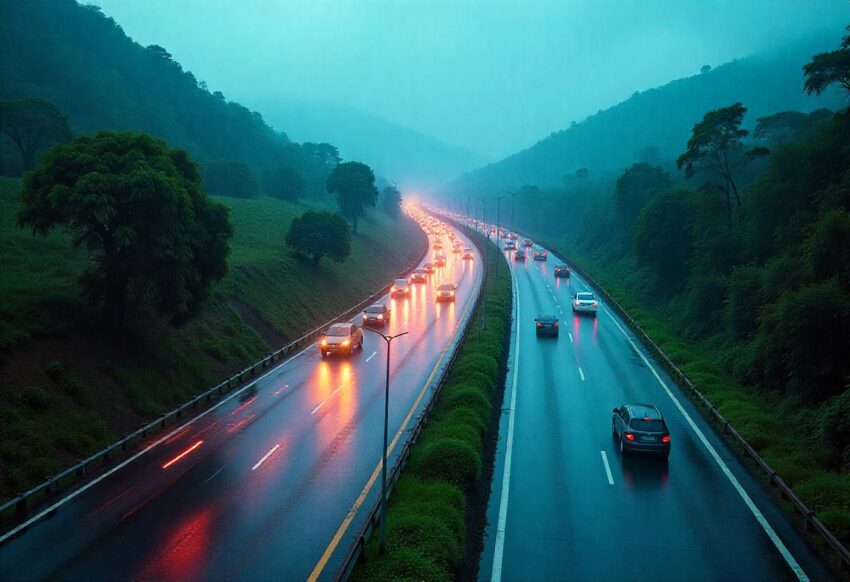Thursday, July 3, 2025

The Delhi-Dehradun Expressway is set to be a game-changer in terms of connectivity, wildlife conservation, and economic development in key regions of northern India. By significantly reducing travel time between Delhi and Dehradun from 6.5 hours to just 2.5 hours, the expressway will make travel more efficient and accessible, benefiting not just commuters but also boosting tourism to popular hill stations such as Mussoorie, Rishikesh, and Haridwar.
A standout feature of this project is its commitment to wildlife protection. The expressway will incorporate Asia’s largest wildlife corridor, ensuring safe passages for animals, including elephants, through underpasses, tunnels, and elevated roadways. With the addition of sound barriers, special fencing, and non-intrusive lighting, the expressway aims to reduce roadkill and preserve the natural habitat surrounding the route.
Economically, the expressway is expected to bring significant growth to the towns along its path, including Baghpat, Shamli, and Saharanpur. The improved infrastructure and accessibility will encourage both business and tourism in these areas, stimulating local economies. The project is designed not only to enhance connectivity between major cities but also to foster sustainable growth and environmental harmony.
The much-anticipated Delhi-Dehradun Expressway is poised to revolutionize the travel landscape between Delhi and Dehradun, significantly cutting down travel time from the previous 6.5 hours to just 2.5 hours. This major infrastructure project promises not only to enhance connectivity but also to introduce world-class facilities, ensuring both safety and convenience for travelers.
A standout feature of this expressway is its groundbreaking wildlife corridor, set to become the largest of its kind in Asia. This unique aspect of the expressway is designed with a strong commitment to wildlife preservation. To protect and provide safe passage for animals, the corridor will include underpasses, tunnels, and elevated roadways. This design ensures that animals, such as elephants, can cross the expressway without the dangers of traffic collisions.
Incorporating non-intrusive yellow lighting and strategically planted vegetation around the main structures, the expressway will also focus on reducing noise pollution with sound barriers. These elements aim to minimize disturbances for wildlife. Moreover, specially designed fencing along the expressway will prevent animals from wandering onto the roads, reducing the risk of roadkill. This will be a significant step towards protecting wildlife in the region and reducing accidents involving animals.
The Delhi-Dehradun Expressway will be equipped with state-of-the-art infrastructure to ensure smooth and safe travel. Over 110 underpasses, five rail overbridges, and four major bridges will be constructed, enhancing the flow of traffic and minimizing congestion. In addition, 16 strategically placed entry and exit points will facilitate better connectivity. With a maximum speed limit of 100 km/h, the expressway promises to offer travelers a faster, safer, and more convenient journey.
Boosting Regional Economy and Tourism
The Delhi-Dehradun Expressway is expected to have a profound impact on the economy of towns situated along its route, such as Baghpat, Shamli, and Saharanpur. These areas will likely see a surge in business activity and tourism, as improved access will attract more visitors to these regions. Notably, popular hill destinations like Mussoorie, Rishikesh, and Haridwar will become much more accessible, making weekend trips to these scenic locations easier and more inviting.
As these destinations experience a boost in foot traffic, local businesses and the hospitality industry will benefit, contributing to the economic growth of the entire region. With reduced travel times and improved infrastructure, the expressway will make it possible for more people to enjoy the natural beauty and cultural richness of northern India.
Explore Key Destinations Along the Expressway
Several charming destinations along the Delhi-Dehradun Expressway will soon be more accessible, allowing travelers to experience the region’s rich landscapes and cultural heritage. Here are some must-visit spots that will be easier to reach with the new expressway:
- Dhanaulti: Located on the Chamba-Mussoorie road at an altitude of 2,250 meters, Dhanaulti is a serene town offering breathtaking views of the Himalayan range. It’s an ideal destination for travelers looking for tranquility amidst nature’s beauty. The cool climate and peaceful atmosphere make it a perfect getaway from the hustle and bustle of city life.
- Rishikesh: Known as the “Yoga Capital of the World,” Rishikesh is situated at the foothills of the Garhwal Himalayas and offers spectacular scenic beauty. Surrounded by lush forests, riverside promenades, and mountain views, Rishikesh provides an ideal setting for both adventure seekers and those in search of spiritual peace. The town is famous for its yoga retreats, river rafting, and spiritual landmarks.
- Chakrata: This charming cantonment town, located between the Yamuna and Tons rivers at an altitude of 7,000 to 7,250 feet, offers stunning views of the surrounding mountains. Known for its unspoiled natural beauty, Chakrata is a perfect spot for those looking to escape into the hills and enjoy the serenity of the region.
As the Delhi-Dehradun Expressway opens to the public, these picturesque destinations will become even more accessible, encouraging visitors to explore the diverse experiences that northern India has to offer. Whether you are seeking adventure, relaxation, or spiritual solace, this new route offers something for every type of traveler.
A Future of Sustainable and Efficient Travel
The Delhi-Dehradun Expressway is not just an infrastructure project; it represents a vision for a more sustainable and efficient future of travel. By integrating wildlife preservation features, modern amenities, and innovative infrastructure, the expressway sets a new standard for how transport projects can balance development with environmental stewardship.
With the expressway expected to open soon, travelers can look forward to a quicker, safer, and more enjoyable journey, all while supporting the region’s economic growth and contributing to wildlife conservation efforts. As the project progresses, it promises to be a landmark development that will have long-lasting positive effects on the region and beyond.
«Enjoyed this post? Never miss out on future posts by following us»



